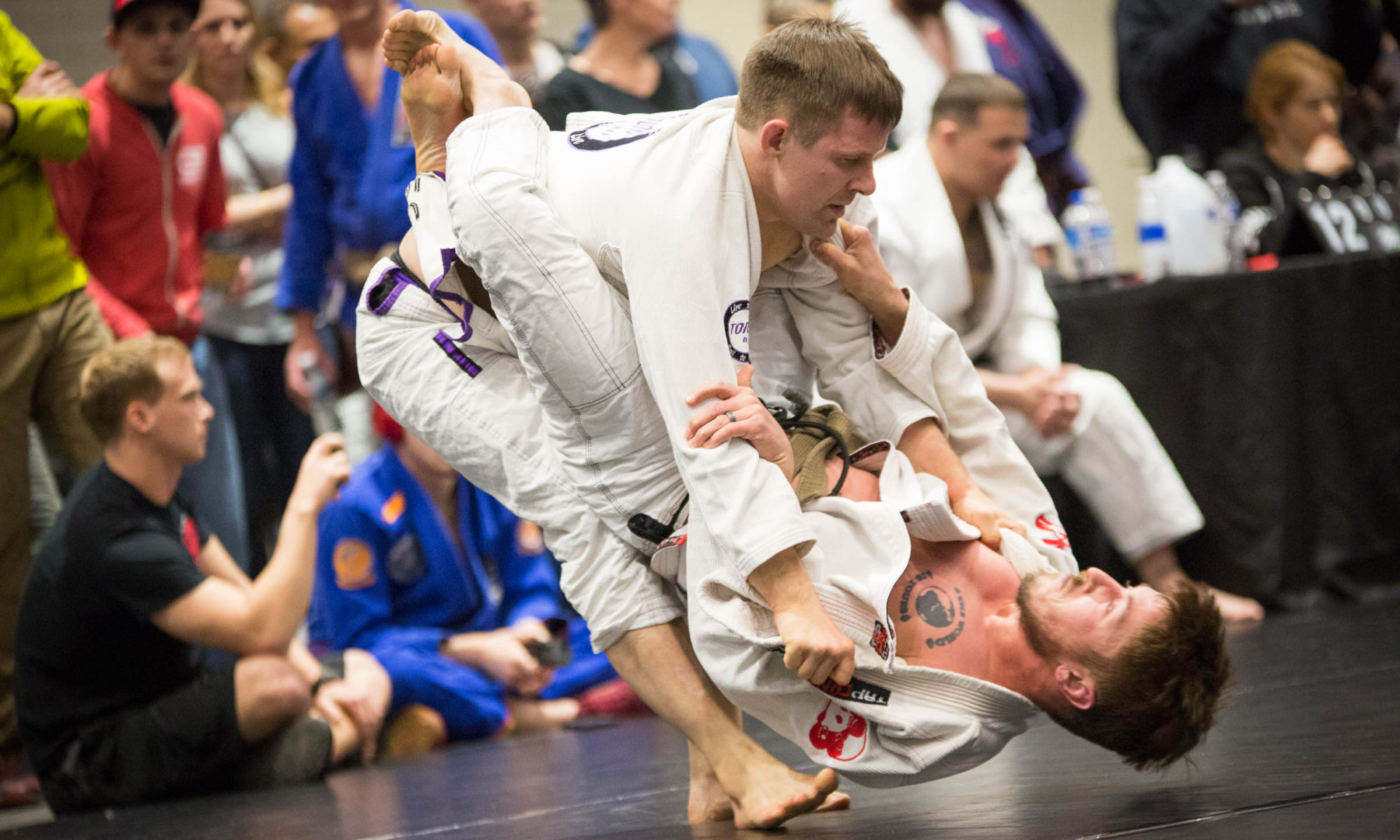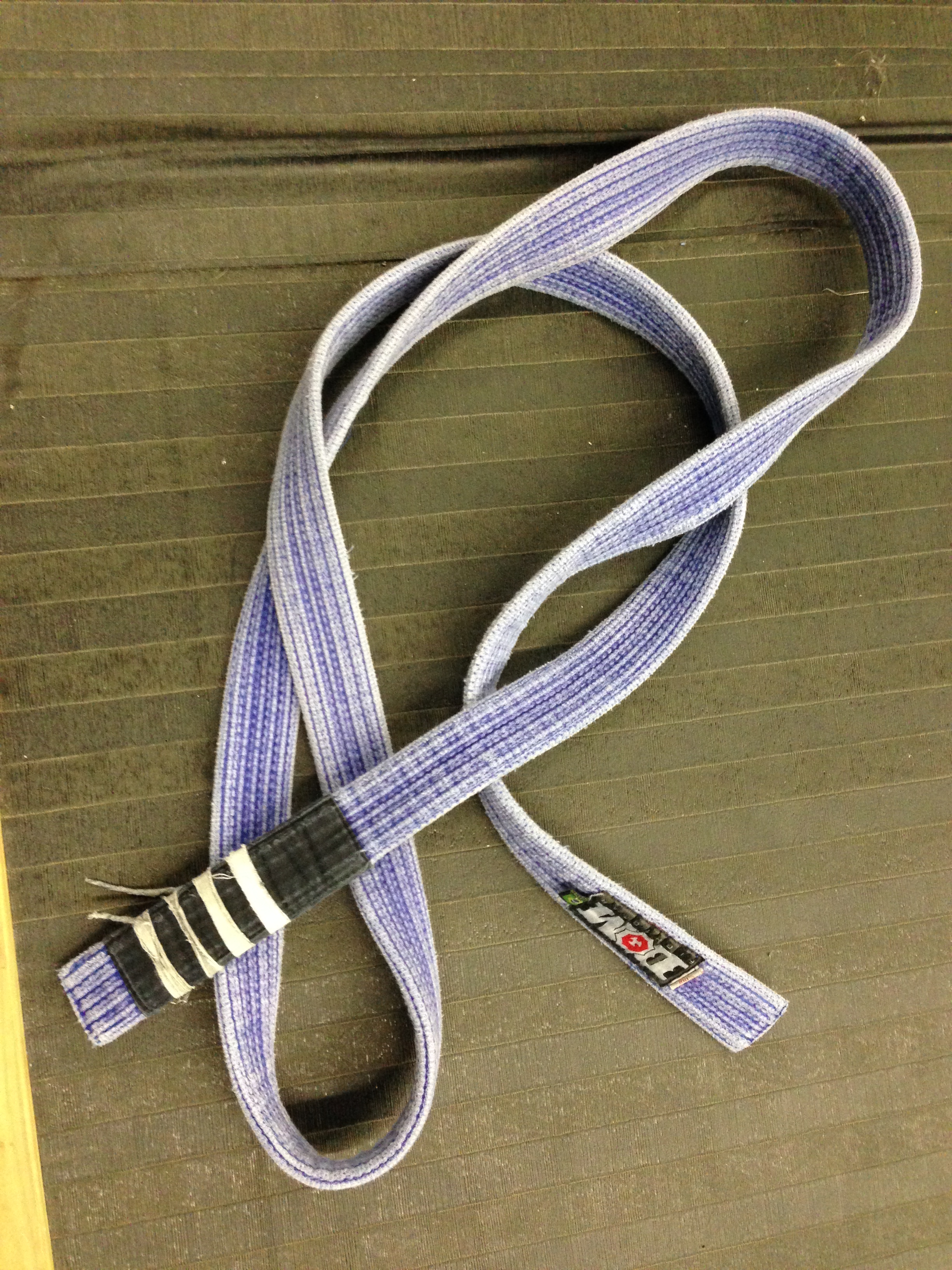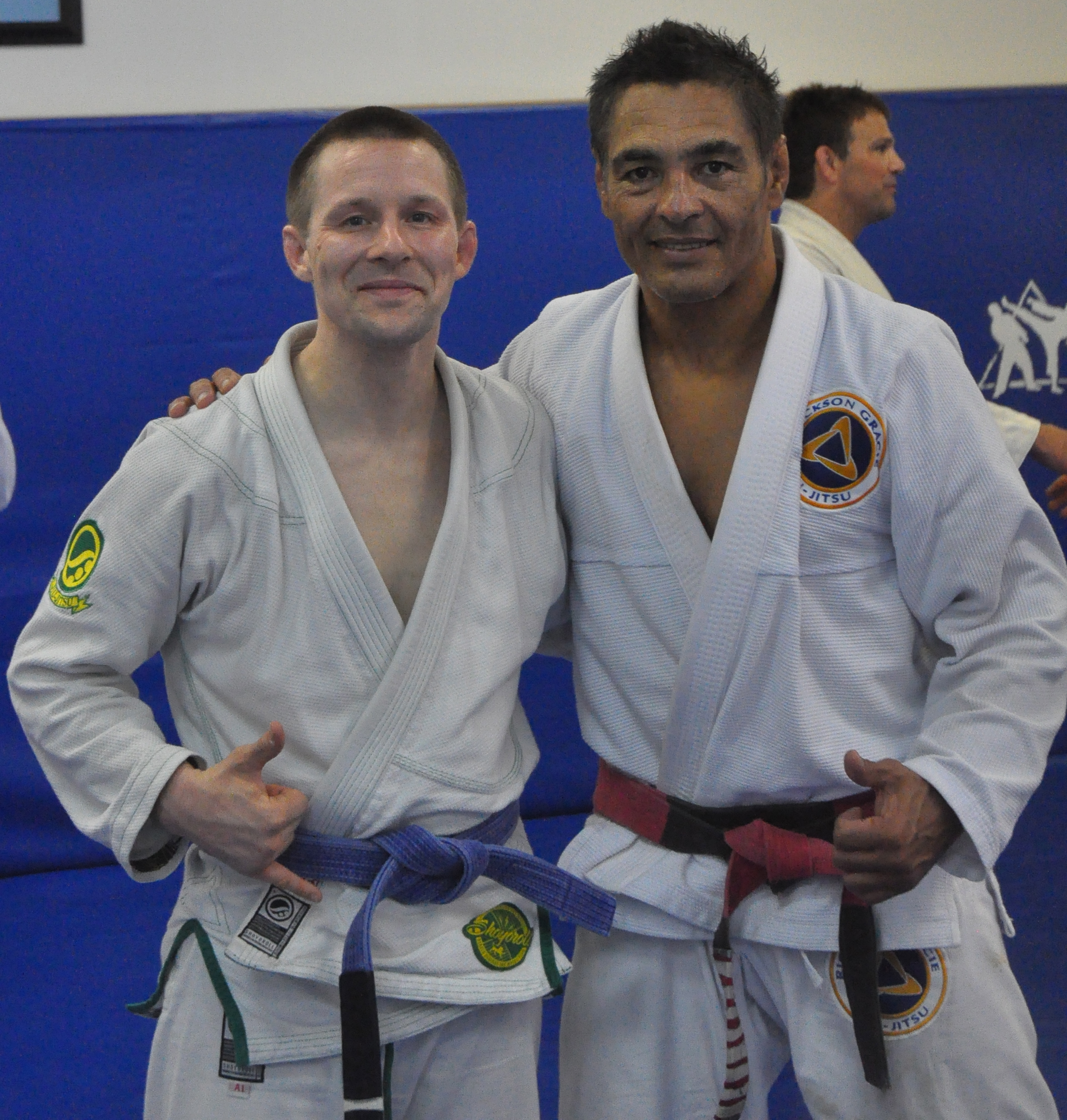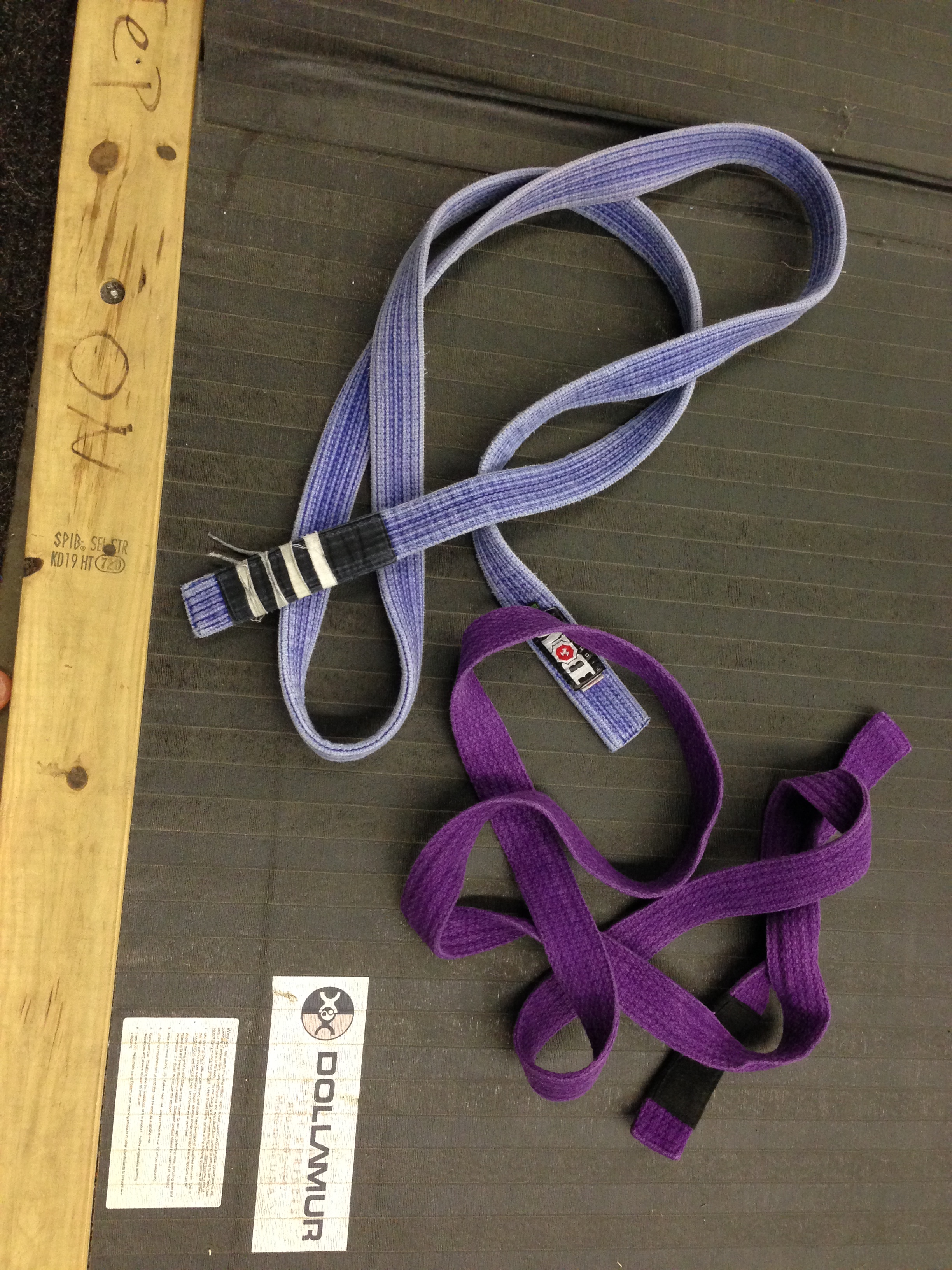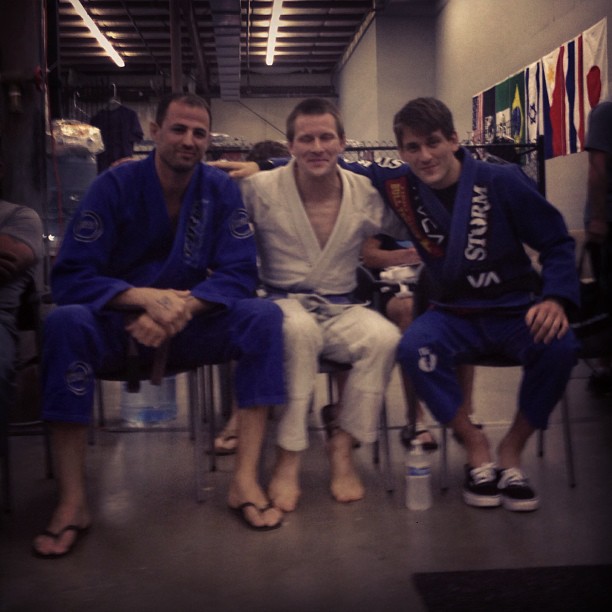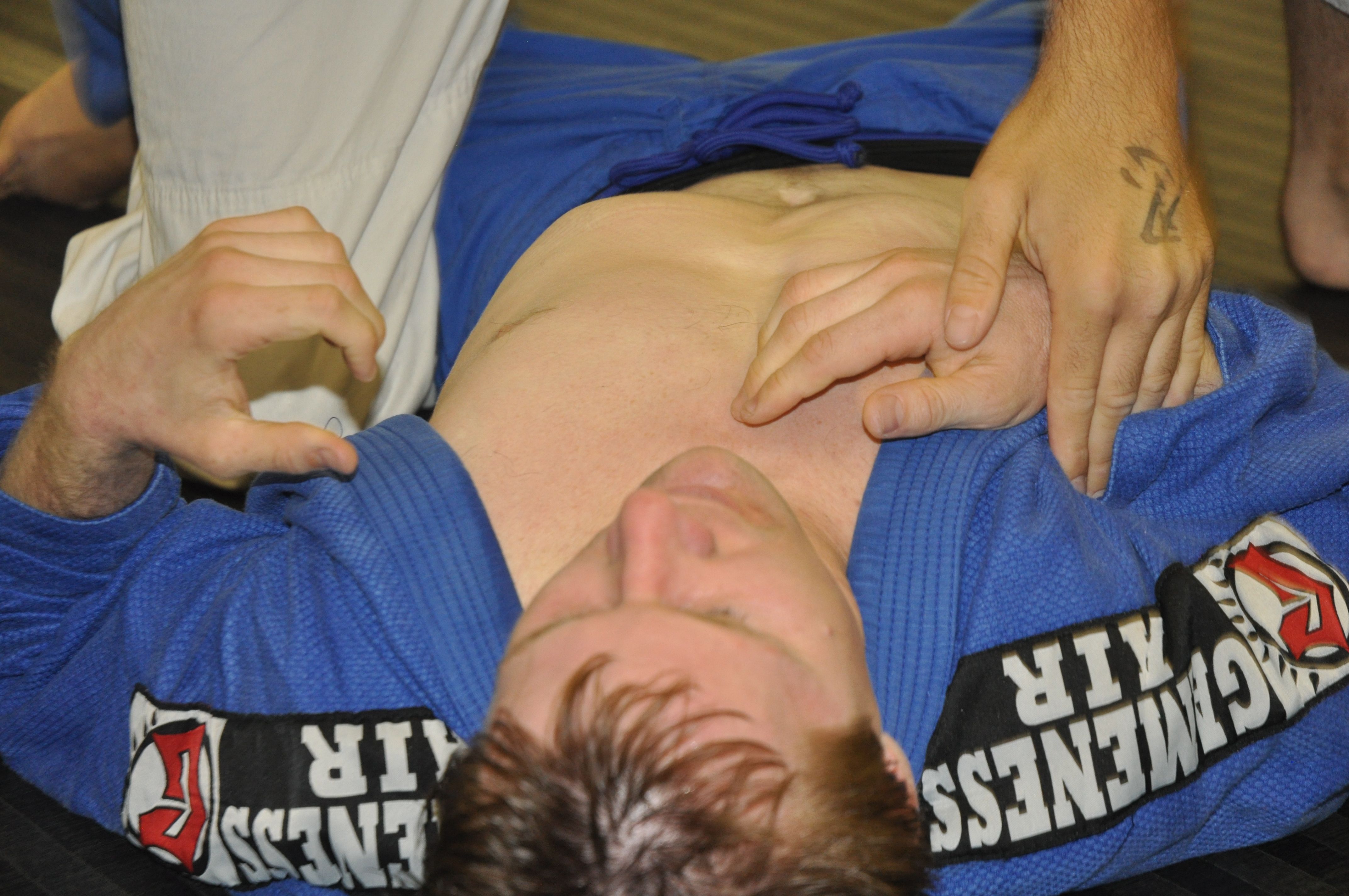Every belt has a different meaning. As I’ve said before, a jiu-jitsu belt is literally just a piece of cloth — but symbolically a whole lot more. The piece of cloth just keeps your gi closed. It’s the work you put in on your journey, the time you spend with your instructor and training partners, that really gives a belt its meaning.
For that reason, every belt has a story. Today I want to talk about my blue belt and why I love it.
My blue belt is a Dom belt. One of my closest friends and training partners bought it as a surprise. He got the belt at the Mundials without me knowing it and gave it to my instructor to keep for when the time was right. That alone makes this belt special for me. My instructor, Seth Shamp, was a brown belt then, so he asked Billy Dowey — an excellent instructor at Forged Fitness — to come to our school for the promotion.
This is the belt I missed out on for a long while, the one I thought I’d I never get. I don’t have a natural aptitude for jiu-jitsu — it took me three classes to learn the basic hip movement we call shrimping. I just kept showing up to every class.
Every class, that is, except the one night that black belt Mazi Heydary visited us. I was picking up my girlfriend’s sister at the airport. It was the one class I missed for months.
Later, I found out I was supposed to get my blue belt that night. I probably don’t have to describe to you the feeling in my stomach after I discovered this.
But I did get it eventually, and with it, my ritual train. Yes, this is the belt I got my train in. It probably still has sweat and blood in it from 18 minutes of my best friends beating on me.
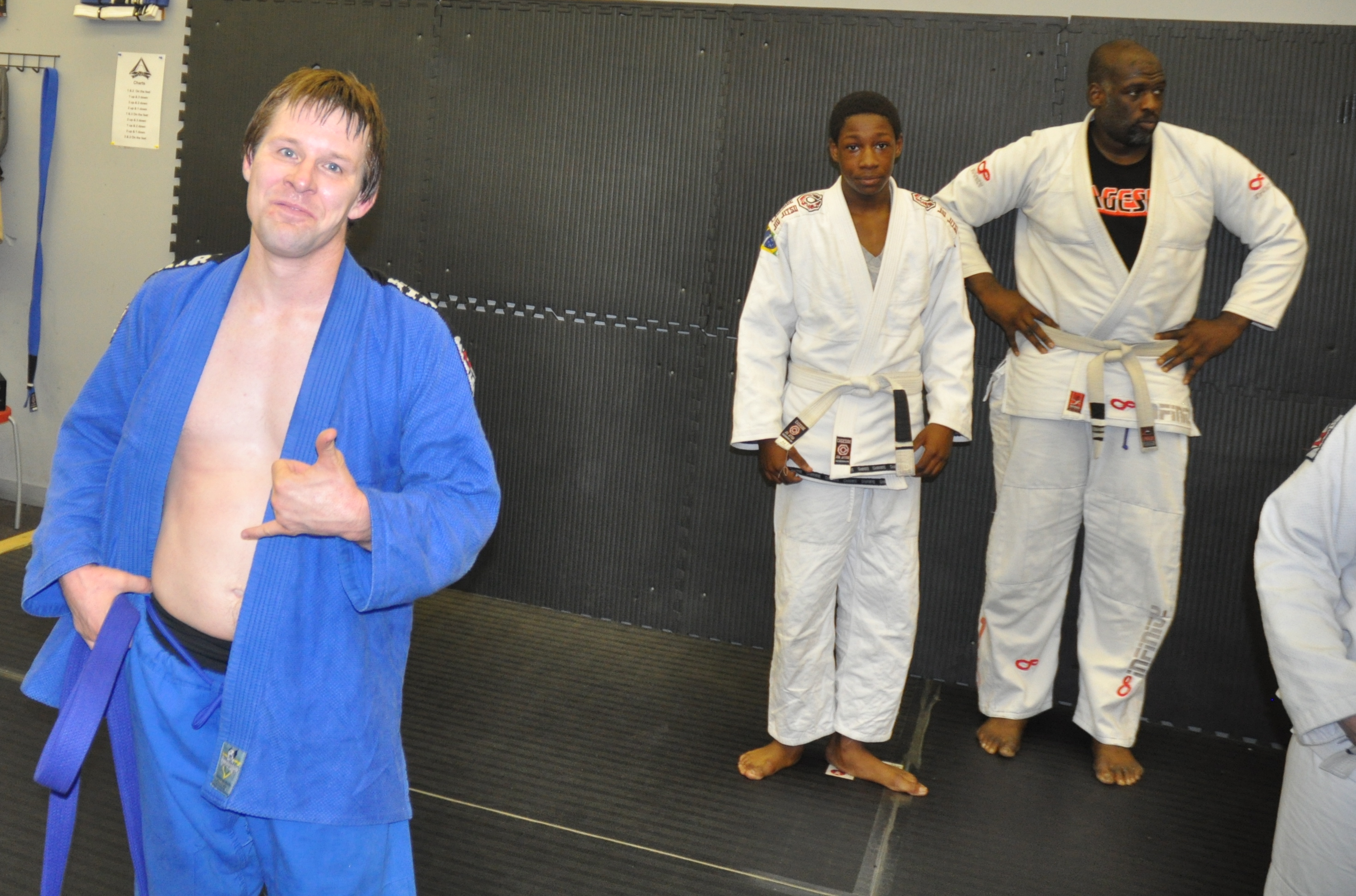
Because of its distinctive deep blue color, it’s a nice-looking belt. It’s thick and tough and fades into a really cool hue the more you train. That’s mostly good.
It’s also bad, because it has also gotten my ass kicked at two gyms I’ve visited. Some guys thought it was purple and they sent some killers after me to test the visiting “purple belt.”
This is the belt they disqualified at the Atlanta Open because it was too worn and faded. I had to run and borrow a belt from my friend Braxton. It was a little inconvenient, but I was also really proud. It was that faded because I had trained so much.
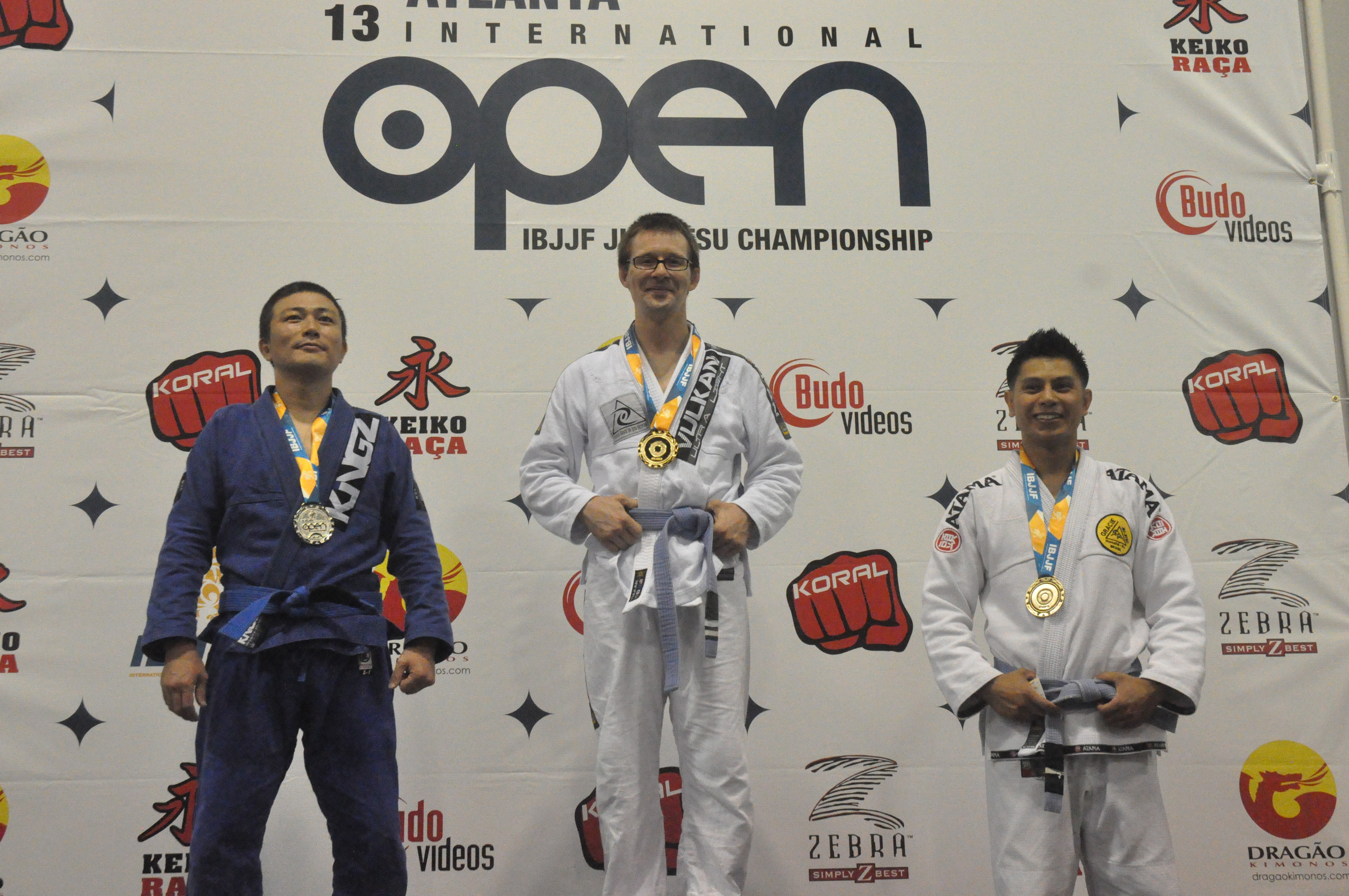
In this belt, I’ve rolled with Rafa Mendes, Gui Mendes, Murilo Santana, Vicente Junior, Samir Chantre, Osvaldo Quiexinho and a bunch of amazing black belts who did me the courtesy of showing me how much I have to learn. In this belt, I’ve taken classes and seminars from instructors like Murilo Bustamante, Dave Camarillo, Gui and Pedro Valente — and of course the legendary Royce Gracie.
Rickson Gracie has touched this blue belt.
I did all eight divisions at a US Grappling tournament in this belt. I sweated through 13 blue belt matches. I’ll never have another belt that I’ll do that in, because you can no longer do any more than four divisions at a US Grappling tournament. I’m truly sorry that I delayed those tournaments, but grateful for those experiences.
This is the belt I wore at the world championships (Mundials) last year. I lost in the first round. I hate losing. But I don’t regret anything: I trained and dieted and sweat and bled with my friends for weeks. I shocked myself with what I was capable of, and I never would have found that out without my friends pushing me until I collapsed. I made a mistake that cost me the match, but the work I put in taught me powerful things. I’ll always have that inside me. My belt is a reminder.
This is also the belt I took double gold in at the New York Open (for some reason, New York showed it more love than Atlanta). It had always been a goal of mine to win absolute at an IBJJF tournament, and I did it, and then I went out and ate everything in sight with some great people. I’ll remember that day for the rest of my life.
A belt is just a belt. But you could also say that a life is just a life. You get out of things what you put into them. I look down at my blue belt and I see a lot of great memories with great people. I see hard work and frustration and commitment and pain and fun and love.
Yeah, I said love. I’ll always love my blue belt.
That being said, I’m pretty fond of this new one too.
That’s right, my white belt got a little dirtier tonight. I want to thank my instructor and all my training partners for helping me achieve this goal. If you’re reading this, though, you’re probably a friend who has contributed in some way to this as well, so thank you too.
I had my first roll in it with Seth, and then a bunch of rolls with some of my favorite folks. I can’t wait to put some more memories into it, starting with 6 a.m. class tomorrow.
